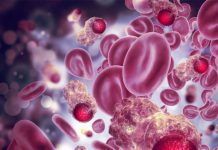For most people who suffer from bone cancer, it is poorly understood why they have developed it because the exact causes of the disease are unknown.
Scientists are leaving no stone unturned in finding out the potential causes of bone cancer, as it is commonly occurring in children and younger adults. They think there could be something that they develop when their bones are growing.
Nevertheless, there are certain possible risk factors responsible for causing bone cancer, and one of them is a genetic predisposition, although considered rare.
According to the Cancer Treatment Centers of America, there are several hereditary syndromes responsible for causing mutations in certain genes, which could be the potential risk factors for bone cancer.
The hereditary disorders that can increase the risk of developing bone cancer include:
- Li-Fraumeni Syndrome: A rare hereditary disorder that increases the risk of developing certain cancers, especially in children and teenagers.
- Rothmund-Thompson Syndrome: Another rare condition that affects the skin, which has been associated with an increased risk of osteosarcoma (bone cancer).
- Retinoblastoma: A rare hereditary syndrome that causes eye cancer in children, which is triggered by a mutation of a specific gene. Children with this mutation are at risk of developing osteosarcoma.
- Multiple Exostoses Syndrome: Also called “multiple osteochondromas syndrome,” it is a rare hereditary condition characterized by multiple bumps of cartilage on the bones.
Most people with bone cancer do not have an inherited faulty gene; however, some people with underlying genetic mutation or predisposition are at a greater risk of developing osteosarcoma.
A recent new study that appeared in the journal ‘Nature Communications’ has found that genetic context is crucial in determining the course of Ewing’s sarcoma, a type of bone cancer commonly found in children and young adults.
Lead study author from LMU’s Institute of Pathology Dr. Thomas Grünewald said, “The clinical course of the disease is very heterogeneous and this variation cannot be attributed to the acquired somatic driver mutation since this mutation is common to all patients.”
“We, therefore, took a closer look at the somatic mutation in the context of the individual genome,” added Dr. Grünewald. “The acquired mutation occurs in a variety of genetic backgrounds, and it turns out that inherited variations in regulatory elements have a marked effect on how the driver mutation acts in different individuals.”
The study researchers explained that every patient with Ewing’s sarcoma has the same ‘somatic’ mutation in the bone; however, they vary as per the genetic variability that they might have inherited.
Dr. Grünewald said, “Up to now, personalized cancer therapy has focused mostly on the acquired somatic mutations. Our study shows that the genetic context is a crucial determinant of disease progression and that it can inform therapeutic decisions.” “Our work on Ewing’s sarcoma is one of the first studies to document the impact of the interplay between germline genetic variations and somatic mutations on the progression of malignant disease in individual patients,” added Dr. Grünewald. “We assume that this principle also applies to other types of cancer.”





















